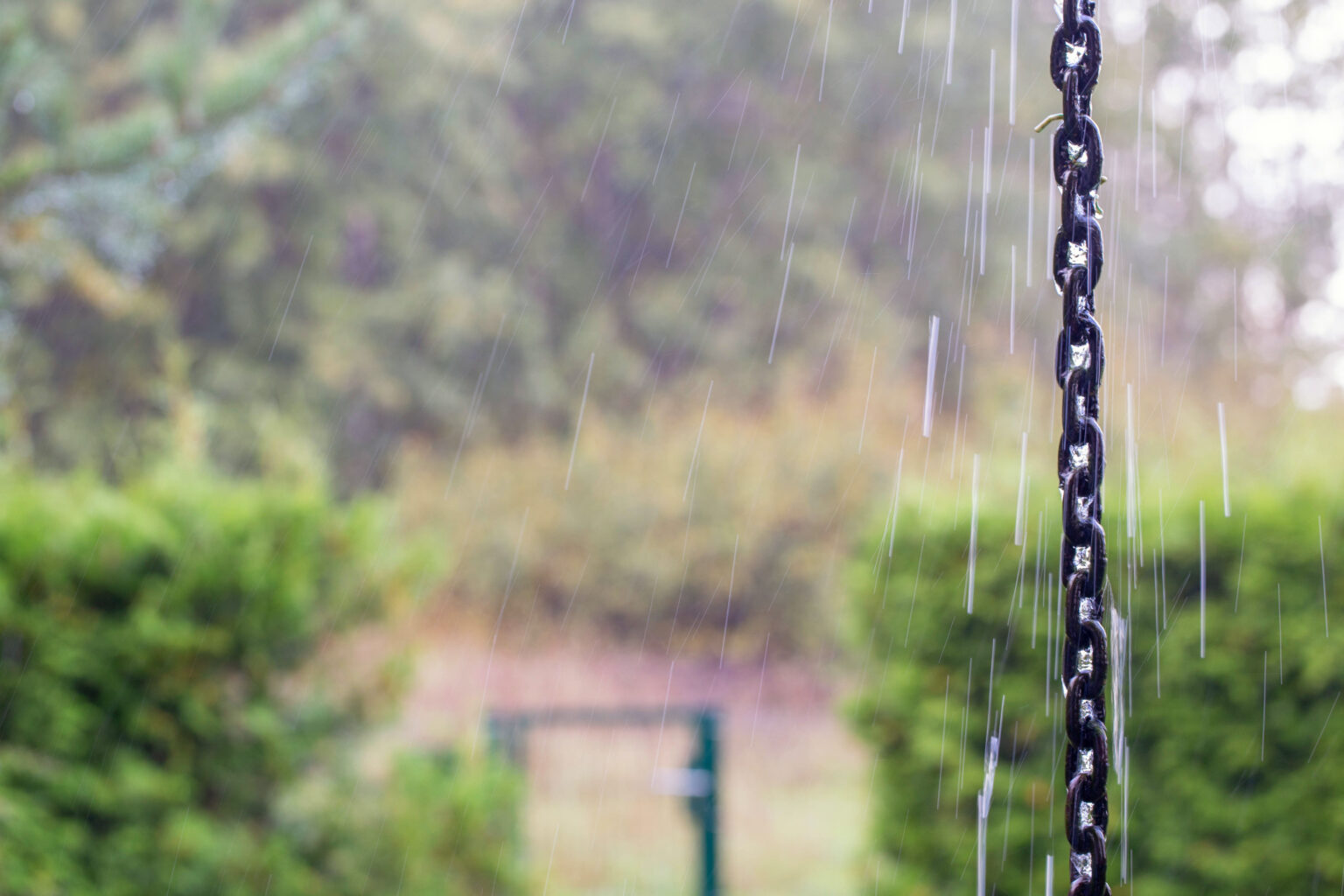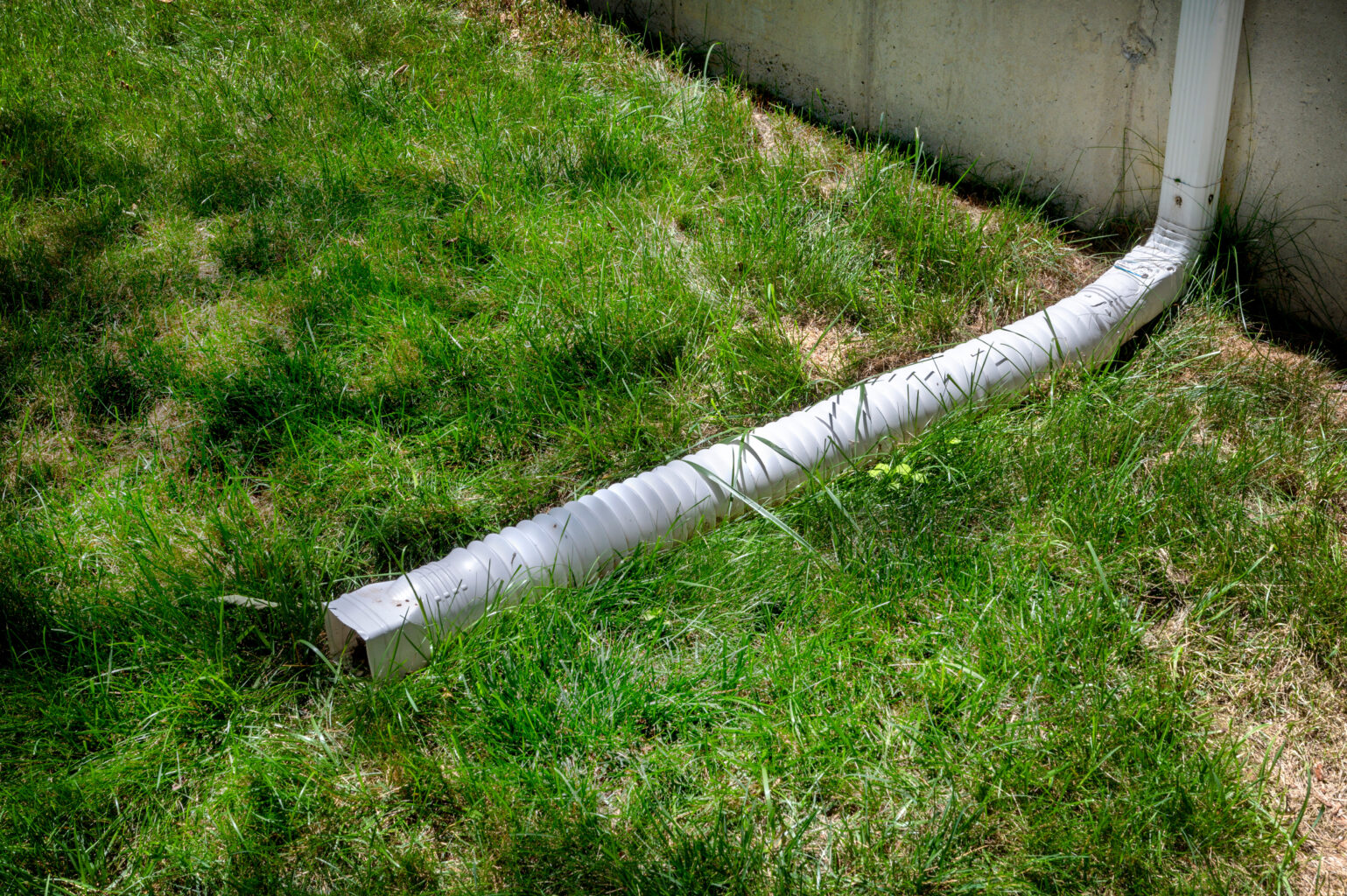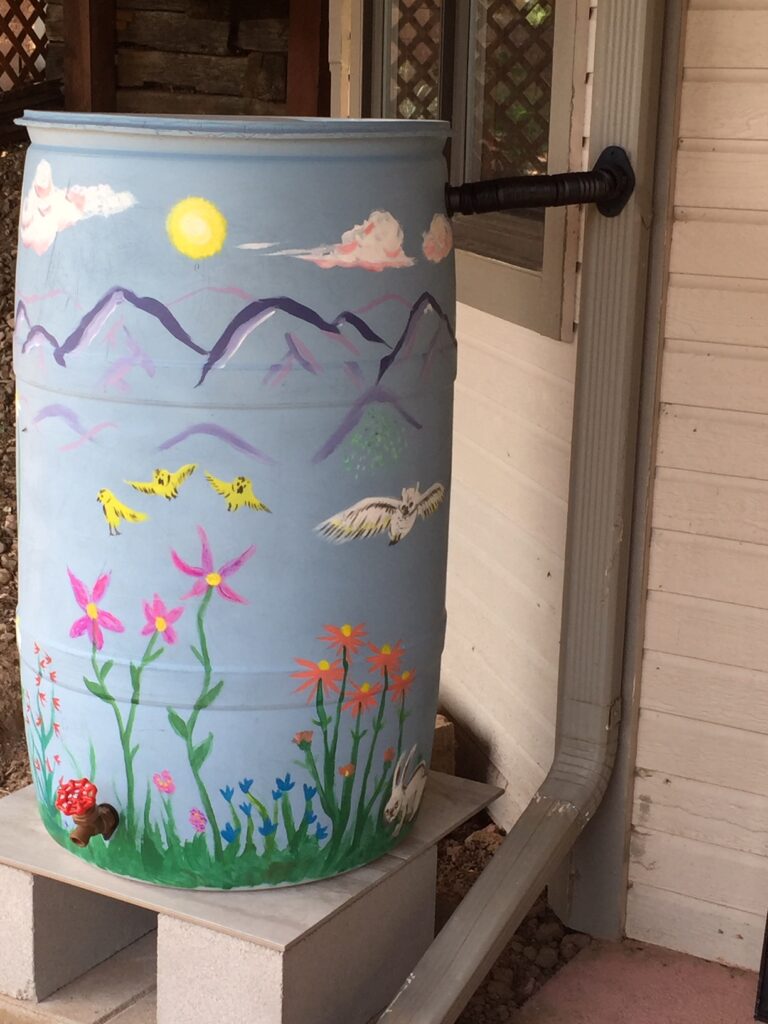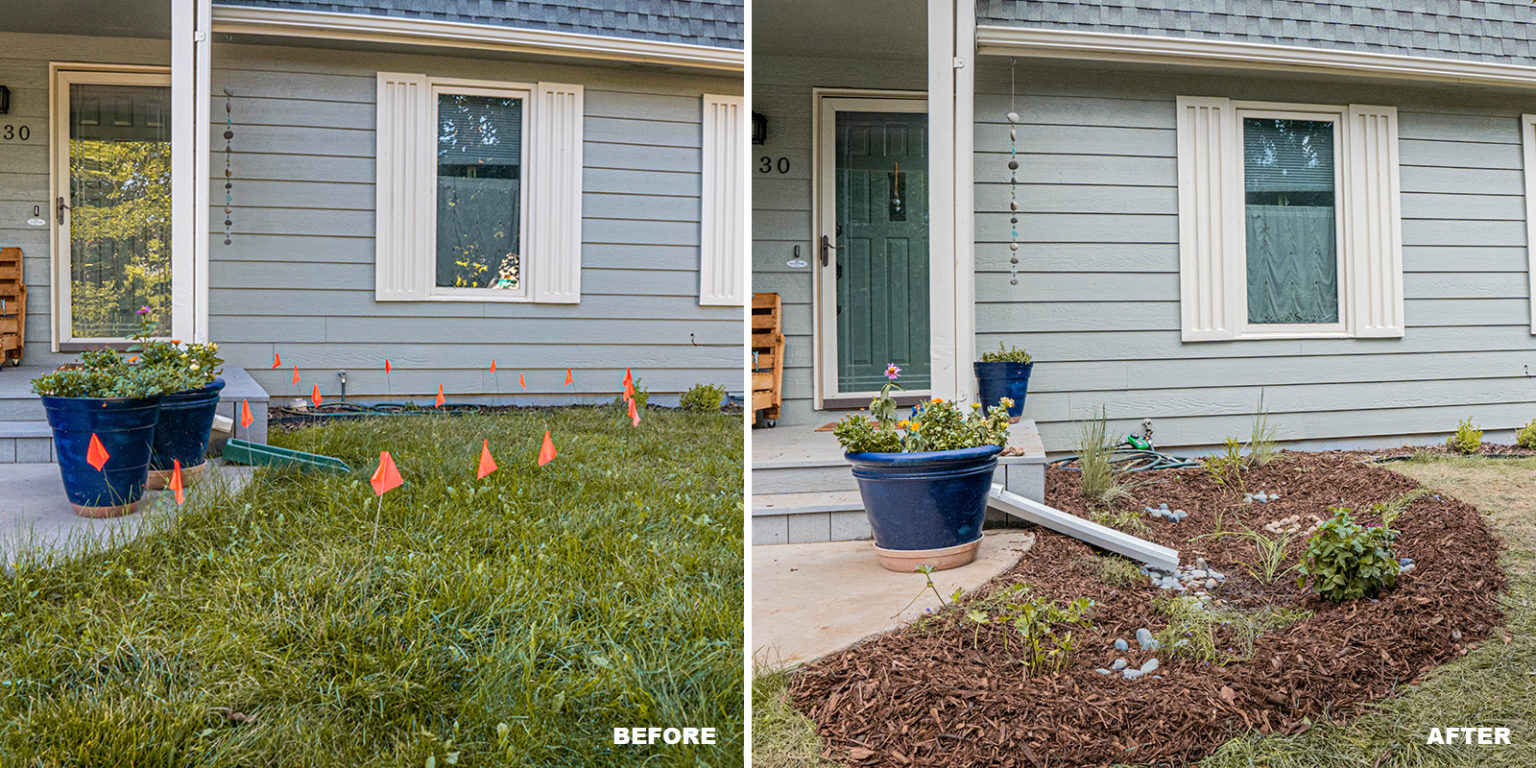
Hang a Rain Chain
Rain chains are an easy and attractive way to slow down water coming off the roof of a home. They can replace traditional downspouts or be added to a gutter. While they need to be installed in a way that keeps water from pooling near the home’s foundation, they can prevent soil erosion and gently distribute water over a larger area.
Check out this video from the Colorado Stormwater Center of Rain Chains in action and read What Is a Rain Chain? (2023 Guide) by This Old House for more rain chain considerations.


